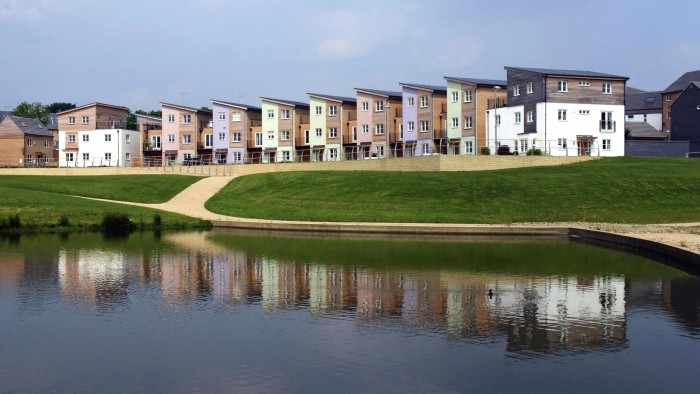Election housing promises come under fire

Roula Khalaf, Editor of the FT, selects her favourite stories in this weekly newsletter.
Britain’s dysfunctional housing market is riding high on the political agenda, with parties responding to voters’ concern with headline-grabbing manifesto promises — yet none of them contain sufficiently wide-ranging solutions according to academics and economists.
All parties have produced a flurry of housing policy proposals in recent weeks, but experts say their ideas fall far short of addressing the need to build more homes.
A poll by Ipsos Mori found that 15 per cent of people thought it was one of the most important issues facing Britain today, up from just 5 per cent in 2010, at the start of the last government.
ComRes also found that 16 per cent of people considered housing affordability to be a crucial issue, the highest level of concern since the last housing bubble in 2007.
Moreover, 80 per cent of the public believe there is a “housing crisis”, according to Mori.
About 120,000 homes were completed in the UK in 2013-14 — well below the 200,000-300,000 a year that experts say are needed. They criticise politicians for being preoccupied with measures to subsidise home ownership, rather than boosting supply.
Jeremy Blackburn, head of policy at the Royal Institution of Chartered Surveyors, said that “none of the three main party leaders have shown themselves ready to grapple with the thorny issues that block a solution to our housing crisis”, particularly “a drastic increase in supply across all tenures”.
Jonathan Portes, director of the National Institute of Economics and Social Research, said that Labour and the Liberal Democrats “deserve some points” for producing some supply-focused ideas.
But, he added, “for at least 15 years all parties have known that the main problem was supply and said they would deliver more homes and neither this government or the last one have actually done so”.
“Delivery is what matters and that has been completely lacking by all parties up until now,” he said.
Michael Ball, a professor at Henley Business School, said that the political system itself poses a major constraint: “Politicians are so scared of offending anybody at all, but in order to get new housing supply we have to offend some people.”
Nearly all of the promises made by the parties so far are “about increasing demand, and to some extent decreasing the tax base”, said Christine Whitehead, a professor at the London School of Economics, such as Labour’s stamp duty exemption for first-time buyers.
“Nobody has any idea how they are going to produce their [supply] numbers and their numbers [of homes] to be built are all plucked out of thin air anyway,” she said.
The Labour party has promised to oversee the construction of 200,000 new homes a year by 2020, and the Liberal Democrats are targeting 300,000 a year. The Conservative party has not set a specific annual target but has acknowledged that too few homes are being built.
All three main parties have backed the creation of new garden cities.
But, Ms Whitehead said, none of the parties have addressed the question of how to pay for all this new housebuilding. Spending on new social housing has been cut from £2.5bn in the last year of the previous Labour government to £651m a year under the coalition.
“The elephant in the room is whether you can increase supply without subsidy, and where is the subsidy going to come from?”
Melanie Leech, chief executive of the British Property Federation, said none of the main parties showed an understanding of how the housebuilding system works.
The Labour party’s proposals to crackdown on landlords were particularly counterproductive, she said, as they risked deterring large professional landlords and investors from building new homes for rent. “Individual interventions in the market at particular points along the supply chain risk moving the problem around to other parts of the housing system, rather than solving it.”
However, the plan is politically popular; more than 50 per cent of people think the government should introduce rent controls, according to a poll by YouGov for the Sunday Times.
Campaign group Generation Rent has calculated that there were a majority of renters — as opposed to homeowners — in 30 constituencies in 2001, increasing to 60 constituencies in 2010. “We believe that will rise to over 100 seats by 2020,” said Alex Hilton, the group’s head.



Comments